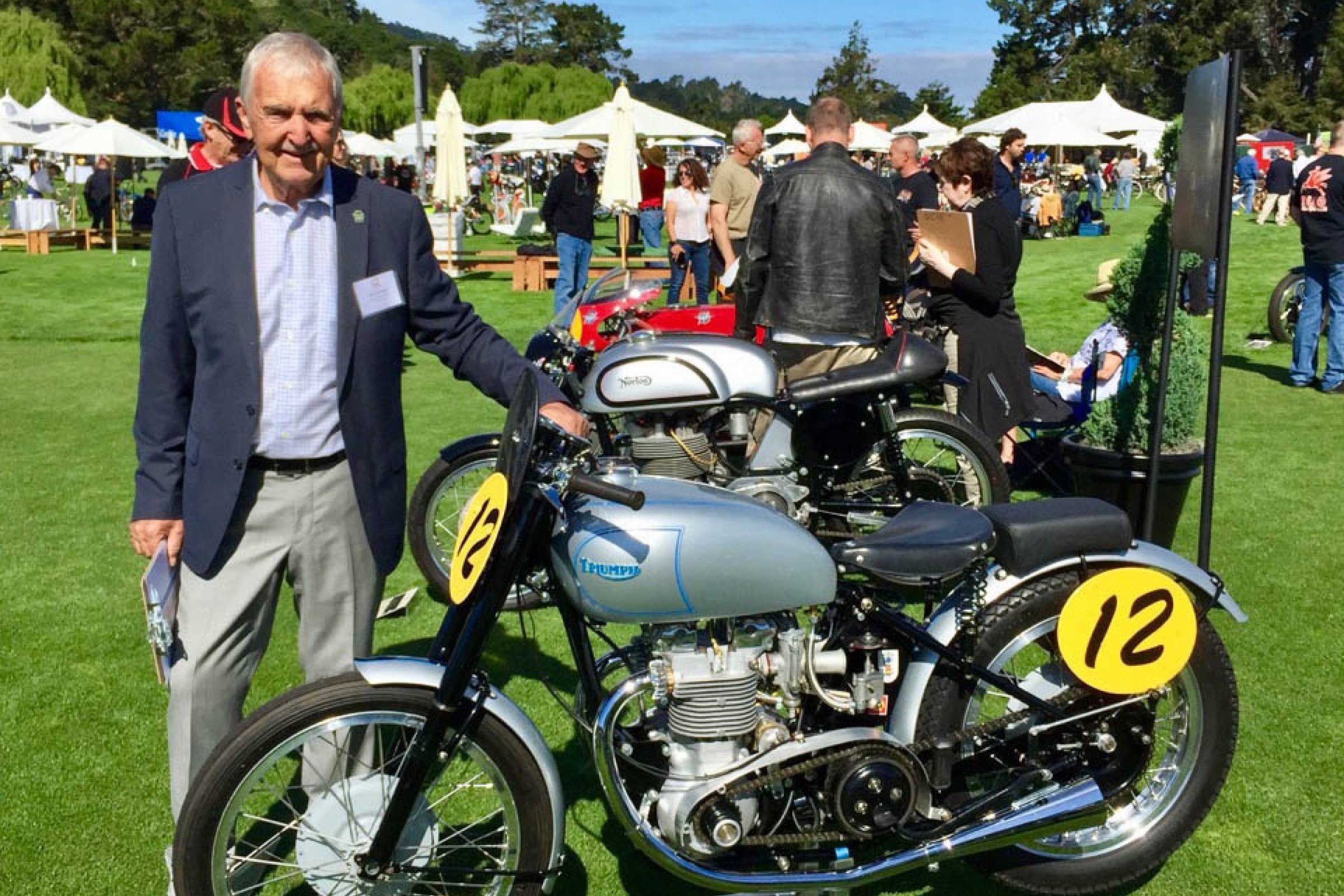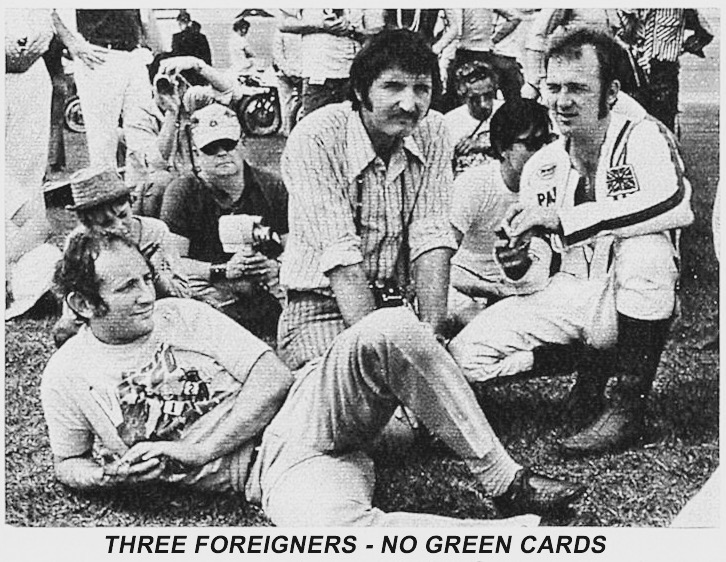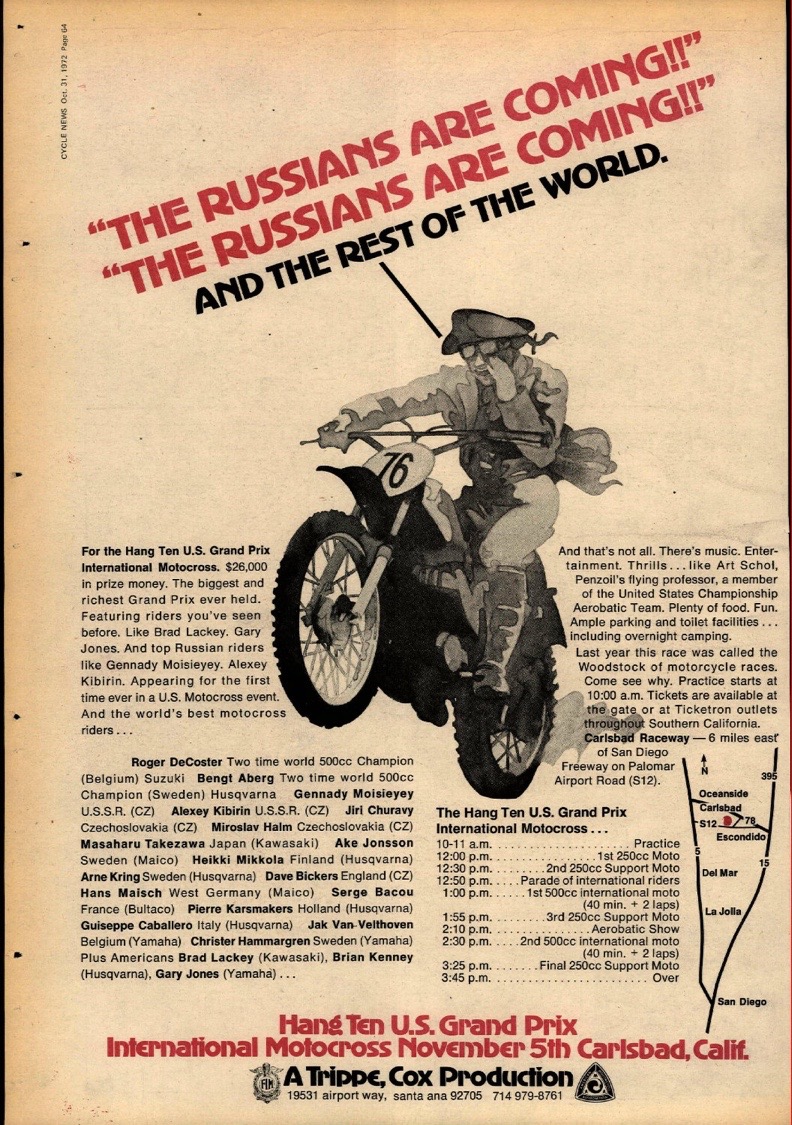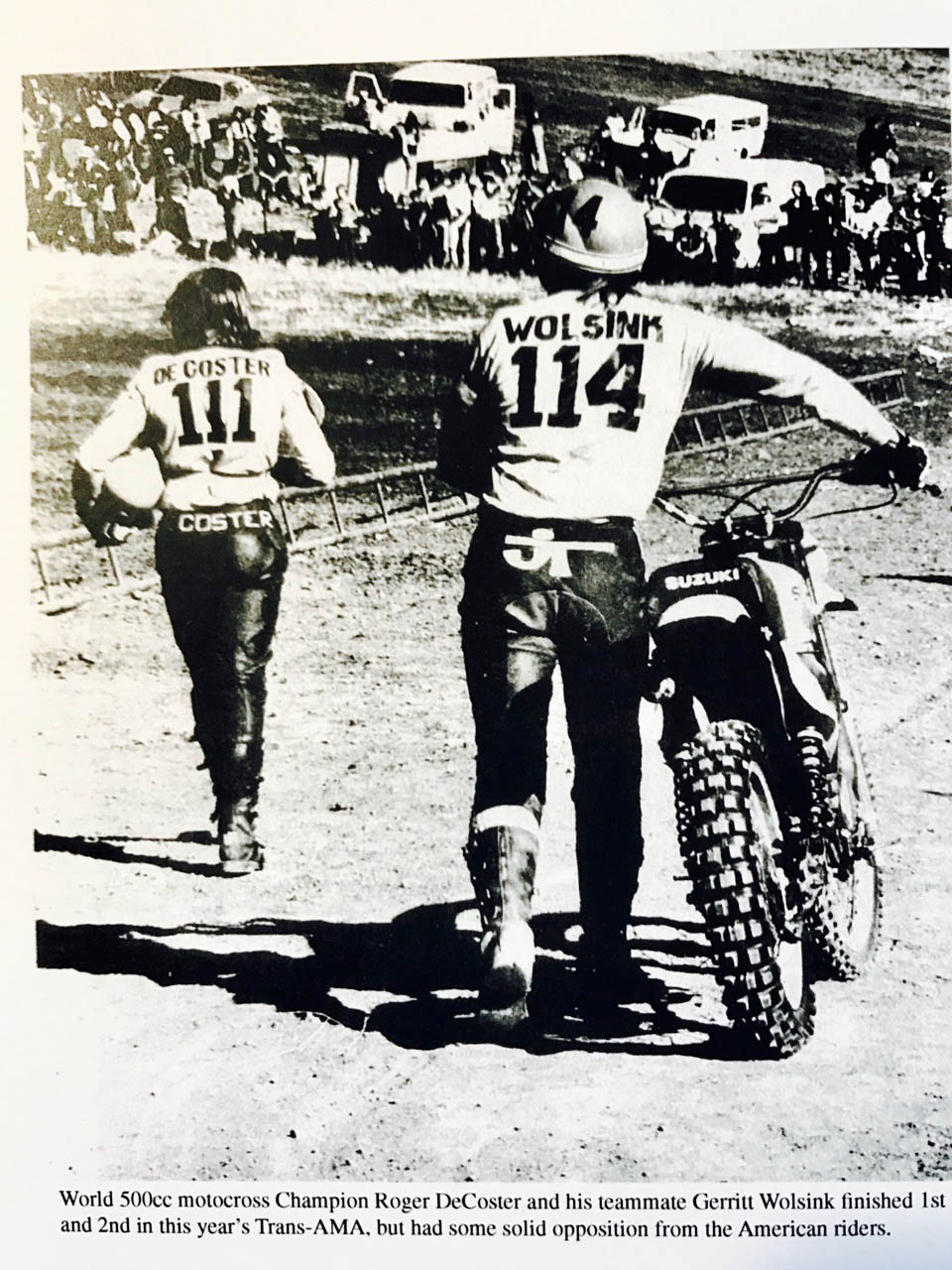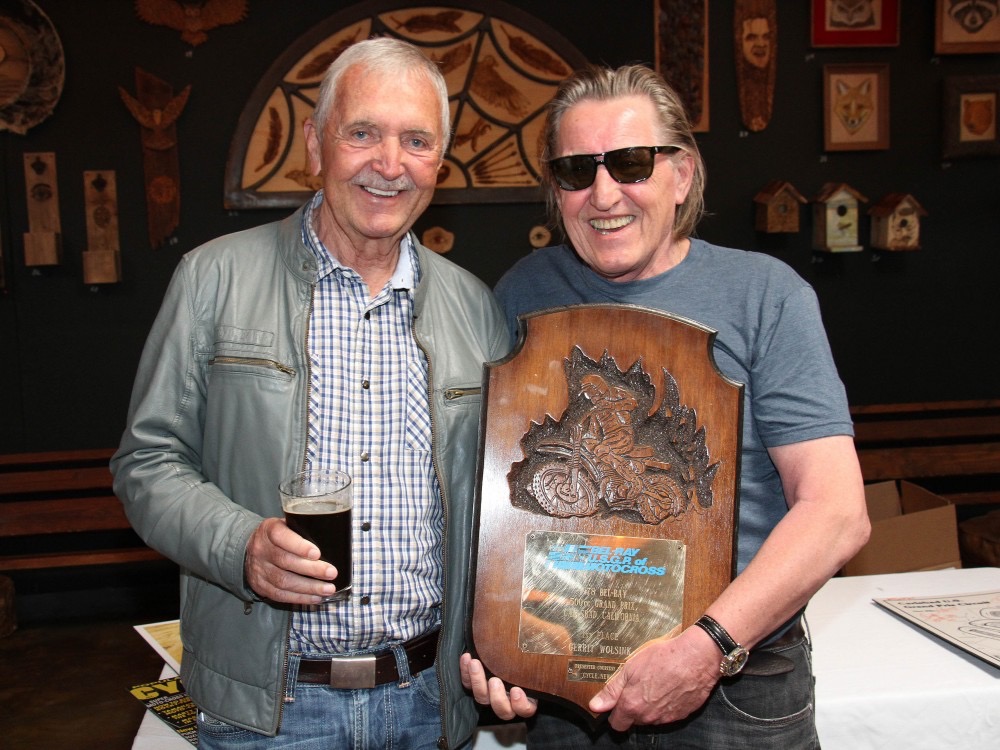Gavin Trippe is a name you might not hear at this year’s Anaheim Supercross, but his contributions to motorcycle racing–dating back to the late sixties–have touched millions of fans. A legendary racing promoter, Trippe is perhaps best known in motocross circles for promoting and running the legendary Hang Ten Carlsbad USGP of Motocross and the accompanying coverage on ABC’s Wide World of Sports.
Trippe was also the man behind the made-for-TV Superbikers events that took place during the mid-eighties and would ultimately lead to what we now call Supermoto racing.
Promoting large-scale motorcycle races during the seventies and eighties was not for the faint of heart–Trippe was running his events up against races promoted by Mike Goodwin, Mickey Thompson, and C. E. Altman, all of whom were larger-than-life personalities and were not afraid to play things fast and loose with competing promoters. Today, Trippe is in his late seventies and still involved with motorcycling, although in a more relaxed role.
Racer X: What are you up to these days?
Gavin Trippe: Well, I retired from promoting motorcycle racing when PACE bought me out. That was Alan Becker and the guys in Houston–you know, the people who had supercross back then. When they bought me out, they had never managed to run a world championship event, so the very last event I did, it was for them. Roger DeCoster and I basically went up and laid out a track at Hollister Hills up in Northern California and we did a 500cc Grand Prix event. Then I stepped away from motorcycles for a period of years and was working in the automobile business.
The USGP at Carlsbad is legendary, still to this day. How did that come about, and seemingly so easily?
Oh, it wasn’t easy! The interesting thing is, back then, because I used to cover Grand Prix races for Motorcycle Weekly—it was a competitor to Cycle News—in the early seventies…. The AMA didn’t even know what a motocross was. One day I went down to Carlsbad, and Stu Peters and Kelvin Franks had this little track. I remember sitting there thinking what a great chance this place allowed us. So we did our first race, and it was advertised as “The Russians are coming.” We knew the people at the FIM, but we had to go to Westerville, Ohio, and explain what motocross was to the AMA. They wanted to make sure we knew what we were doing. So we started with an international race, then we had the USGP. But that first one, it didn’t count for points, and it was held in Laguna Beach. And then we moved it to Carlsbad, and things got rolling by around 1972 or so.
You ran some very high-profile televised events back when it was nearly impossible to secure TV time. How did you pull that off?
At that same time as we were getting started, we got to know Bruce Brown, who was doing his movies [such as On Any Sunday]. He and his whole crew hung out in Dana Point. So our very first one, well, Bruce Brown filmed it. And he had really good connections with ABC. That first one was done on film, which was rare for the time. And then Dick Graham, he was the founder of [the] Hang Ten surf clothing company, he and Bruce were really close. So Bruce Brown filmed it and Hang Ten sponsored it. No one had sponsored events back then, and it was the first of its kind. The funny thing was the ratings–we used to host the race in June, and then ABC would wait and air it in the middle of January. The ratings were so good, everyone was blown away. I think most of the country was covered in snow and there was nothing else on, but who knows. So, you know, with the big networks back then, even if it’s frog jumping, they will put it on the best of time slots if the ratings are good. So ABC was amazed at the numbers. And back then, there was really only three networks, and the Wide World of Sports was the top show. And because no one knew any different and it was filmed in June and they would show in January, that is why it had such good ratings. But then the event transformed to Superbikers, and it was hard to get spectators for that.
How did the Superbikers thing come about?
Well, it was the guy who worked at ABC’s Wide World of Sports–his name was Robert Iger. I think he went on to be a president of Disney [Ed. Note: Iger is the current CEO of Walt Disney Company]. Anyway, he asked me why Kenny Roberts does not compete with Roger DeCoster and why does neither of them race against Jay Springsteen. I explained they raced different disciplines of motorcycles and no matter what, they never compete against each other. He said he thought it would be cool if they did, and he asked me to put on the event where they could. But that is a whole different story–you know, how do you lay out a track for a Harley XR750 and a factory works Honda RC500? But the amazing thing was, it didn’t take a lot to get people fired up. As it turned out, the riders were curious as well. Everyone had to run the same tires, and the Harleys hauled ass on asphalt and stumbled in dirt, and the MX bikes were the opposite. But then I sold to Becker in the late eighties, and that was it. I moved on to the car business.
So it was basically a guy who didn’t come from racing who gave you the idea for Superbikers?
Pretty much. I think timing is everything in life. I would like to think I was a creative genius with the promoting, but it was a different era back then. At the same time I was doing it, so was Mike Goodwin. He lived in Laguna Beach, and he basically started supercross. But he was such an asshole, he couldn’t help himself; he just wanted to screw with anyone else who was running races, even if they were not a direct competitor. When we ran the Grand Prix, he would rent a plane and fly it over our race to promote his race and to mess with us.
Weren’t you involved with the AMA Supermoto series when it was big in the mid-2000s?
Yes. Myself and Troy Lee got together and did an AMA national championship, but the only problem was that we were on temporary tracks and it was [held in] oddball places. We lost money on the deal. We had more fun than it was practical. But honestly, when Troy and I get together, it’s just for fun. That was the main reason for doing it. We were realistic that we might not make any money.
So what are you up to now?
Well, around that same time I was doing Supermoto with Troy, I ran a couple of motorcycle auctions at the Portola Plaza hotel in Monterey and during the MotoGP events. That was a lot of fun. I’d hooked up with a guy who was in the car business. So anyway, Rusty West and his dad had a place that did car leasing. I helped them develop [what is now] Market Scan. We had all the data, every make and model, and we had a program that quoted car prices for leases. We basically created a search engine for car leases that was a lot of fun. I did that in 2006 or 2007 or so.
But then I bumped into a guy named Dana Mecum. He was doing these muscle cars auctions in the Midwest, and he had ambitions to break out into other areas. He wanted to make his car auctions nationwide events. So, I was giving him a lift back from Vegas one day and he asked me to open the West Coast for him for motorcycle auctions. I didn’t want to retire, so for the last seven or eight years, that’s what I’ve been doing. California rules being what they are, we had to open a store, which we did in Laguna Beach for a year, then we did our first auction in Anaheim. Now we have a massive database of buyers, and we are on NBCSN all the time. Dana has gone from just a few auctions here and there to a half-billion dollars in sales a year.
We just finished one in Vegas. We did a thousand cars, and we sold 75 percent of them. Our auctions give everyone an excuse to come to Vegas and spend some money. But the bike auctions have been amazing. In the past, it was pretty much motorcycle people selling to motorcycle people, but now bikes have been exposed to car buyers and the prices are going through the roof. A perfect example was last winter. Gerritt Wolsink brought some bikes over to list in our winter auction. One of the bikes was a bike he won the 1977 Carlsbad USGP with. It still had the mud under the fenders from the race. We all thought he would get about $20,000 for it, but when it came up, it went from $15,000 to $20,000 to $30,000 and upwards. It finally sold for $75,000, and we were all astounded. The buyer was a car collector who had actually hitchhiked to Carlsbad that year, and he watched Gerritt win that year and he had to have the bike. Last year, our bike auction in Vegas had over 1,500 bikes. This year we will have 2,000 bikes, and last year we sold over 90 percent of the bikes that were listed. Car buyers have discovered bikes, and they like that you can have one in the living room and hallway, and the bikes are way cheaper than cars. Car buyers like bikes because you can see the engineering; you don’t have to lift the hood. When you have people paying several million for a Ferrari, a bike is very cheap. We have over 400,000 people that watch and follow our auctions on TV, so it has a strong following. Now we have a huge database of buyers, fans and sellers. It has been a fascinating journey. I'm 77 years old now, but it is still a full-time job for me. Basically, that’s the long and short of what I have been doing.
What do you see happening in off road and dirt bike collectable market?
One wouldn’t think it would have the charisma of the Street Triumphs and Harleys, but it comes down to people who competed on them or remembered them. People collect things that turn them on. For many collectors, it’s your interest from an earlier period in your life when you are 60, 30, or 40 years later. You are looking for that nostalgia, so there is no logic in buying. It’s more about your personal ties to the past. A lot of people started off with motorcycles; they wanted something that they had back then. That is what drives the market. But it’s hard to predict what takes off and what does not. But if you watch trends of popularity today, it is logical to think that some people will feel nostalgic about that in 20 or 30 years.
How about the future of collecting?
Well, not many people realize that in 1901, the modern four-stroke motor was created. If you think about it, the early ones had a piston and a crank that drives the transmission; that’s the basic setup. One would think there were several variations that powered vehicles, but that’s not the case. Even today, the most advanced, modern Formula One car still uses that same model. But that is all about to change with the adaptation of electric and hydrogen-fueled cars.
I do feel that the collectability of mechanical cars is going to become more and more rare, as most cars end up getting scrapped. As the electric cars ultimately replace the gas-powered cars, they are going to become more and more collectable. It has taken over 100 years for things to really change, but we might be in a different age here in 20 years. Who would think you want to collect a current car–let’s say, a current Honda Accord? But 50 years from now, a 2016 Honda Accord might be considered valuable, or the latest KTM Adventure bike. Evolution takes a long time, but as technology improves, it takes less and less time to grow.
In 2005, you were inducted into the AMA’s Motorcycle Hall of Fame. I think you were the first race promoter to be honored.
When I was inducted to the Hall of Fame, it was a surprise to me. When I made my speech, I [was] listening to all the racers talk about their own accomplishments. So when it was my turn, I said, obviously, I am grateful for the opportunity. The interesting thing I can say is that I am only promoter in the Hall of Fame, and that the interesting thing is all my other promoters are either dead, dying, or in jail! But overall, I’m very grateful for the life I have lead in motorcycling. I didn’t make much money, but it was fun to be part of a kind of a motorcycle nucleus around the Laguna Beach and Dana Point communities. The whole motorcycle thing was happenstance: sponsors, TV people, [the] surfing community. We used to get 30,000 people at Carlsbad. Those were real numbers; we packed those hillsides. The crowd loved it. It was a different era for sure. We had just chain-link fences that were not even anchored down.
You traveled quite a bit with Roger DeCoster during his prime time as a racer. What was that like?
That’s right. You know, Roger is not much younger then me, and he still going just as strong as ever, traveling every weekend to the races and working in the shop during the week. But yes, we have had some adventures, some of which you can tell stories [about] and some of which you can’t. Some of the best times we had were [during] the trips behind the Iron Curtain and to the CZ factory. But the one thing that is the same today [is that] racing is still all about the rider and not as much about power. Power is just how it gets to the ground.

